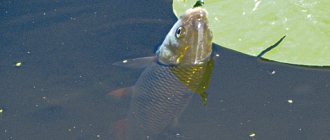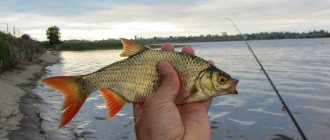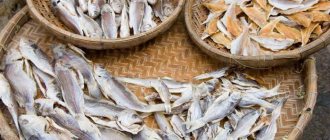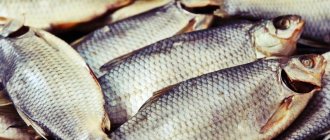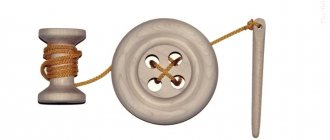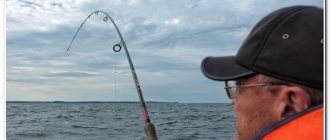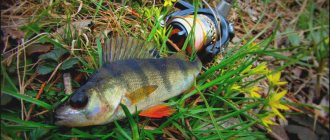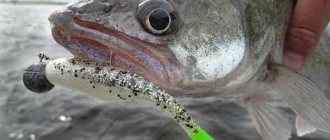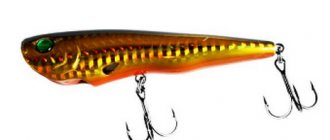Content
- Winter fishing with spinning rod
- Are you catching fish?
- Winter spinning fishing technique
- Spinning rod, reel, cord for winter
- Spinning in winter: tips for beginners
- Video: winter spinning
Friends, winter fishing is not limited to vertical fishing. In our city there are reservoirs or areas of water areas that allow you to fish with a spinning rod in winter. With our article today we want to touch on the topic of “winter spinning” and everything connected with it. To do this, we asked our users who have been practicing this kind of fishing for several years to answer our questions. Which spinning rod to choose for winter fishing, which bodies of water don’t freeze, how to fish with a spinning rod in winter - these and other questions will be answered:
- Nikitapipin is a multiple prize-winner and winner of fishing festivals, a person who has been practicing winter spinning fishing for several seasons
- Sibiryak007 is a famous fisherman and author of numerous reviews on fishing topics, winter spinning fishing practitioners
- SPIN23 is a fisherman-sportsman, a member of the management team of the NSO Fishing Sports Federation, a participant in the Russian Spinning Championships, and a winter spinning fishing practitioner.
Key success factor
And yet, the main condition for successful fishing in winter, it seems to me, is not the variety of baits used, but the correctly chosen fishing speed. It should be distinctly slow, and the presence of pauses in it is a prerequisite. This is confirmed by an example from my practice.
One day I was doing wiring and in the middle of the distance I was forced to stop: the phone rang. The conversation lasted about a minute. All this time, the twister lay motionless at the bottom. As soon as I resumed the animation of the bait, a sharp blow followed. A one-kilogram pike swallowed a twister.
Accident? No! There are no coincidences in our lives. Just a pause is the most important element of bait animation when fishing with a spinning rod, especially in winter. Don't forget about this, dear fishermen. Good luck to you and solid winter trophies!
Share with your friends!
Winter fishing with spinning rod
Question. Tell us, where and at what time can you practice winter spinning? What kind of catch can you expect in these places in winter?
Nikita (Nikitapipin):
— I would divide winter spinning in Novosibirsk into two types: on the Ob and on small rivers. On the Ob I fish until the ice freezes completely (around December), and I open a new season when the unsafe ice washes away (in February - March). You can catch the entire species composition of the Ob, including white fish. The main catch is pike perch. On small rivers, small pike and perch are caught, once a crucian carp pecked on a jig 

Vasily (Sibiryak007):
— In winter in our city I had to fish on the Gloomy River, also known as “Smelly”, “Funka”, “Ugryumka”. This is a small river formed by a warm drain from a thermal power plant. In this reservoir, I personally only came across small pike, no more than 300 grams, but, as a rule, in quantity. I also know from reviews and reports that sometimes you can meet up to a kilo of pike there, but this is more of an accident than a pattern. Unfortunately, I don’t know any other winter spinning spots within the city.
Sergey (SPIN23):
— Winter spinning is a rather loose concept. Spinning fishing in sub-zero temperatures can already be considered winter spinning, but for me, winter spinning begins when all the main bodies of water are frozen, and ends after the ice melts on still bodies of water. The main places for winter spinning are, of course, the Ob River in the area of the Novosibirsk hydroelectric dam and the warm flow of technical water from CHPP-3, in the common people “Vonyuchka”. It is also possible to occasionally fish on the Ob from a boat in winter. Of course, this depends on the ice conditions on the river, but there are winters when the ice does not rise for a long time and the river remains clear of ice almost the entire winter. Thanks to the variable hydraulic regime, even in the most severe frosts, the period of ice captivity on the Ob is short, and the ice is often simply washed away by the rising level.
Unfortunately, now, due to recent changes in legislation, the main winter spinning spots - ZhBI Bay, Kamni, Mayak - are closed to anglers. In the listed places one could count on excellent catches of pike perch, pike perch and pike perch. Today, only Eltsovka remains at our disposal - a not particularly promising shallow area, and Matveevka, as well as sections of the river within the city - Dimitrovsky Bridge, for example.
On Vonyuchka, you can only rely on strings, but in winter the local crucian carp is surprising, which is caught in the mouth on a jig. The only thing is that the very quality of the fish from this reservoir is questionable and is only of sporting interest.
Fishing process
First, you should study the fishing area well. Our task is to find a school of perch and keep it at the point for as long as possible. To do this, we will scan the bottom using the fan method, using a sinker weighing 15 grams. We throw it into the selected area and tap the bottom. Let's see how the rod tip performs jerks. If you can find a difference in depth, a snag or a steep slope, it will be very good.
We make casts at the same distance, but with a certain deviation. This way we can identify the most promising points for ourselves. The deviation can be 30 degrees. This way we will get 6 sectors and as a result we will choose the most promising one.
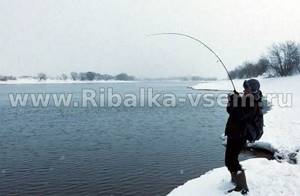
If there are no good leads, then move along the shore. We spend no more than 5 minutes on each sector. In half an hour we caught the place. If there are no bites, we move on to something else. We take into account the features of placing perch on the river in winter, discussed at the beginning of the article. We remember that the perch should stand where there is a good food supply for it.
If we managed to catch one or two perches, we set up a microjig. First, we make a quick, uniform sweep in the bottom layer so that the weight touches the bottom, raising the dregs. Perch often shows interest in such baits. During the wiring, you can make jerks or change the pace.
If the perch does not want to bite, then we put a diverting leash. With its help, it is possible to seduce even passive individuals. It is better to lead the bait on a retractable leash at a slow speed. At this time, the bait should closely resemble a wounded fry.
When catching inactive perch, it is better to use lures of natural dark colors. Sometimes it makes sense to change the silicone to a brighter one. But all this may not give results if there is no perch, or it has left the point. Therefore, you should move along the shore, especially since daylight hours are short in winter.
Are you catching fish?
Question. How can you characterize the winter spinning bite? Are there snatches, for example, or are captures always rare?

Nikita (Nikitapipin):
— In winter, the fish bite is not much worse than in summer. Of course, there are also mega-grabs, but this applies to fishing on the Ob. On small rivers, throughout the winter, fish are caught consistently, without grabs, but we always get away from zero.
I believe that the wild bite on the Ob is tied to the water level. Each level has its own “golden” places within the city. As a rule, these places are located next to pits with a calm current. During this period, the pits are filled to capacity with peaceful fish; such aggregations also have their own “shepherds” who make short-term raids or feed all day. Before freeze-up and in early spring, I caught short-term (maximum week) bites of large bream (from 2 to 4 kg) and ides, which respond well to small, bright edible silicone. Moreover, from one point, pike perch, pike and large bream are caught mixed together.
Vasily (Sibiryak007):
“Specifically at Ugrumka, I didn’t encounter extremes of bite; the fish there are always more or less active. What’s interesting is that she behaves there, as it seemed to me, not at all like a winter person, but rather like a summer person. Not only are the bites usually aggressive and active, but you can almost always catch the fish; it willingly repeats the attacks. Resistance is also “summer”, sometimes it even came to candles. Apparently, all this is explained by the warm water in this river; the fish there are “warm and cozy.”
Sergey (SPIN23):
— Naturally, in winter the fish are less active than in other seasons, but you can still catch the so-called grab and have a blast; one such fishing happened to me last year, in December. Fish bites occurred on each retrieve, and it got to the point that the fish would bite several times until it sat on the hook. But in 90 percent of fishing trips, catching 1-2 tails per trip is the norm.
Fishing for pike in December using a spinning rod

In December, anglers who are fanatically in love with their hobby, if the water bodies in their area are covered with ice, take a spinning rod with them and travel to other areas where there are ice-free sections of rivers and lakes in order to catch pike. There are rumors circulating among anglers that there is a short period in December when the “Big Winter Glut” sets in, when she greedily rushes to almost any bait in open water. Experienced fishermen confirm that hunting for pike with a spinning rod in December can be successful.
- In December, spinners successfully navigate deep sections of lakes and rivers with boats and motorboats.
- Catching pike on a jig from the shore in December also brings success, when the angler anchors his boat and starts jigging.
Pulsating retrieval is effective: the fisherman casts the bait, gives it time to sink to the bottom, makes five or six turns of the reel, pauses again and rewinds again by five or six turns.
When and where to catch pike in December
The best time for pike fishing in December starts from 12 o'clock and ends after three hours. Often pike bite better from nine to one in the afternoon.
In the first winter month, spinning fishing can be successful from the shore. It has been established that pike leave their deep anchorages in winter and come to feed in shallow water (this fact is well known to fishermen who catch pike from the ice; they install girders along the reeds).
In new places on a river or lake where pike live, the fisherman will have to walk a lot along the shore before finding a place where the toothy predator is caught. The December search for pike differs from how it is searched for in the warm season - winter fish are still much less active than summer fish, so you should spend more time fishing in places that seem interesting.
Read also: Hunting for a toothy one with a balancer
By the way, we should not forget that wandering along the snowy bank of a river or lake in December is not the same as in September, so the fisherman must be dressed accordingly - warmly, but the clothes should be light. Shoes should be waterproof, warm and, of course, light. Boots made of porous rubber have all these properties.
What do pike bite on in December?
You can catch pike in December using the same spinning lures as in the warm months of the year, but many anglers prefer their good old friends - oscillating spoons, proven over decades. Experienced fishermen argue that it is better to use smaller baits, since at this time the pike’s belly is already filled with caviar, so the predator, when getting food for itself, prefers small fish.
In December, as in any other month of the year, pike bite best on a spinning rod when the weather is stable and there are no large jumps in atmospheric pressure. Some say that his pike bite better on clear days, others argue that cloudy days are more productive, but everyone agrees that in unstable weather there is no bite at all.
Catching pike with wobblers in December video
Fishing for pike in December using a microjig on a small river
Winter spinning fishing technique
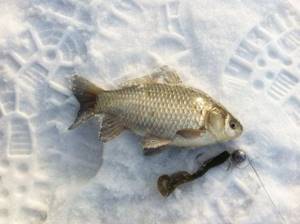
Question. Tell us about the baits you use in winter and their placement? What is the difference and fundamental difference between “winter” animation and “summer” animation, if there is one?
Nikita (Nikitapipin):
— When fishing on the Ob I use silicone baits 5-7 centimeters, foam rubber, mandules and streamers. Sometimes fish prefer passive baits with a delicate presentation and a light load, and sometimes, on the contrary, they respond better to active baits with a significantly heavier load. Animation is generally slow. “A sad, dying fish” is how I would describe my favorite winter fishing trip. I animate the bait with a spinning rod, and with a reel I only reel in the weak.
On small rivers I fish with wobblers from 7 to 13 centimeters and with a jig of 2-10 grams (depending on the place and situation) with different silicone baits.
Vasily (Sibiryak007):
— I caught pike in “Funka” using a jig and wobblers. Most of the points are checked with a jig on an offset hook, due to the large number of hooks. Wobblers were used less often, mainly in shallow waters with quiet currents, where predators can also be found. In general, both types of baits work well there; combining them = maximum fishing efficiency.
Sergey (SPIN23):
— There is no difference in baits and animation, the only thing is that weather conditions sometimes set their own rules, such as the weight of the load and the size of the bait, sometimes you just need to throw it to the fish, the weights are mostly light - from 4 to 14 grams, but sometimes you have to fish with 26 -28 grams.
In general, the picture is no different from other seasons.
Some tips for choosing gear for winter fishing
Experienced fishermen do not recommend using expensive forms at high negative temperatures, since gear made from modern materials, despite its other advantages, does not withstand large disadvantages. But, it’s true, people usually don’t fish with spinning rods in cold weather.
But at an air temperature of 0 °C or more, you can use any forms. But if you really want to go fishing in the cold, then instead of taking an expensive rod, take with you a budget rod that has large guides that will allow less water to freeze on it.
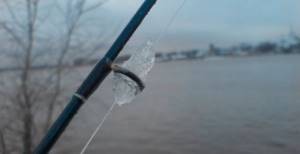
The reel should be chosen with a long handle so that it can be easily caught with gloves, and a closed type to prevent water from getting into it. You should not use any “your own” antifreeze for additional lubrication of the coils. Many branded reels react poorly to “foreign” lubricants.
Lures
When fishing in cold water, spinners are considered the best spinning baits. Since the fish are inactive in winter, the spinner is moved more slowly than in summer.
Today, the use of a bait such as a jig, which imitates not only the shape and color of prey, but also its smell, is becoming increasingly popular.
The jig is made from soft plastic with the addition of various flavoring substances. Jig baits are divided into “active” (having their own game) and “passive” (without such properties). In turn, “active” ones can be “twisters” and “vibrating tails”.
And the latest “squeak” of fashion among various jig baits are the recently appeared “edible” silicone baits, which are becoming more and more in demand, despite the fact that they are not cheap. Not only predatory fish are caught with it, but also peaceful ones, such as carp, for example.
The peculiarity of the “edible” bait is that in addition to silicone, it also contains an attractant and salt. Attractants are substances of natural or synthetic origin that can cause in the creatures on which they are designed a desire to move in the direction of the source of the smell.
Many representatives of fauna have the ability to produce such substances: insects, nematodes, arachnids, crustaceans, fish, mammals. They were also found in some algae. Attractants, being emitted into the surrounding space in an amount of only 0.000009 milligrams, can be detected by individuals at a distance of hundreds of meters.
Many manufacturers produce “edible” baits, which, after production, are simply soaked in attractants and sprinkled with salt. But it is better to call them “conditionally edible”, since all these surface-applied substances, which are included in the composition of the silicone material from the very beginning, are washed off from them very quickly. Therefore, real “edible” baits never lose their smell or taste. In winter, jig baits are preferable to medium weight baits.
They also catch with wobblers, but the bite can be worse, although sometimes there are days when the use of wobblers gives the maximum effect. Often a good bite when fishing for pike is provided by a bait in the form of a foam fish.
But there is no point in taking a lot of different baits with you in winter. In the cold, you won’t change them often anyway.
fishing line
In spinning rods, it is better to use a braided cord, since monofilament fishing line freezes quickly. It is very important in winter to lay the cord well, since in the cold any manipulations with the “beard” will not bring pleasure. It doesn't hurt to have a spare spool in case of unexpected problems. Using a line also provides more convenience when using a jig.
When buying a cord, we advise you to pay attention to the following brands: “Silver Braid”, “Gosen Suspend”, “PRO-JIG”, “Power Pro”. The cords of these manufacturers are frost-resistant: their operation at subzero temperatures is accompanied by less wear and fewer breaks.
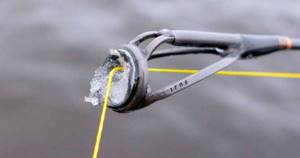
Use of water repellents
To prevent the cords from freezing and the fishing line freezing in the cold, before fishing, their surface should be treated with water-repellent compounds. Otherwise, the frozen cord will become brittle and may break easily. The surface of the passage rings must also be coated with a water-repellent composition.
In order to give the gear water-repellent properties, it is also possible to use it for impregnation (except for proprietary compositions of petroleum jelly, auto-silicone and lubricant for fly fishing flies. But the use of any type of lubricant reduces the casting distance. Therefore, it is not necessary to strive to lubricate the entire cord; it is enough to cover it with a water-repellent composition only the last ten meters.
Treating the guides (often done with goose fat or fly line lubricant) also slows down the line, but is better than freezing them. In this case, it is recommended to lubricate the guide rings and cord at least every ten casts.

Branded anti-freeze product - Kosadaka silicone grease
Spinning rod, reel, cord for winter
Question. Are there any features that fishing gear should have when fishing in winter? What helps you get rid of freezing of the cord, rings, and freezing of the reel grease?
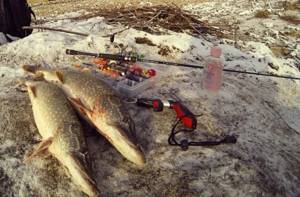
Nikita (Nikitapipin):
— In winter I fish with the same spinning rods and reels as in summer. On the Ob these are light and medium class spinning rods, on small rivers these are ultralight, light and medium. The only thing I note is that I coated the reels with lubricants that allow fishing at subzero temperatures. I fish with the same lubricant in the summer.
If I plan a fishing trip in advance, then in the evening I treat the line 2-3 times with Johnson's Baby Oil and that's enough. If the trip is spontaneous, then I use silicone lubricant already on the pond. I process the cord and rings. The first 5 casts after treatment, the casting range suffers greatly.
Vasily (Sibiryak007):
— I won’t note any special features, because... I just take a spinning rod that is suitable in test/length, a reel of the appropriate size and go fishing. Except that very small rings become clogged with ice a little faster than larger ones. But this is not critical, the difference is small. But you definitely need to fight the freezing of the line, otherwise fishing will turn into torture. I use the well-known Johnson's Baby oil, applying it to the line the night before fishing, it helps a lot.
Sergey (SPIN23):
— In winter, I use exactly the same gear as in summer, the only thing is that I use thinner cords in order to have the maximum sensitivity possible in these conditions. For me it's Major Craft KGL and Sunline Super PE braid.
Take a pink Johnson's Baby bottle and saturate the wicker with it - there will be less frost, and also wipe the rings, but in general there is no way around it, you still have to clean off the ice with your hands.
Tackle
It’s easy to equip a winter spinning rod with your own hands. Be responsible when choosing a fishing rod and its equipment, because the properties of polymers change at low temperatures. Another thing is that there is no information on the temperature conditions of their operation on the gear, packaging and labels.
Rod
Budget fishing rods should be avoided; they don’t perform their best in summer either. Even 2 decades ago, carbon fiber rods quickly broke in frost of a couple of degrees, and sometimes even fell apart into components. The best option is a carbon fiber spinning rod.
Pay attention to the correspondence of the test characteristics of the fishing rod to the weight of the bait or, conversely, choose the latter correctly. If any of the experienced fishermen has several spinning rods, they take the one that is suitable for the bait that is more effective in the pond. It is determined empirically.
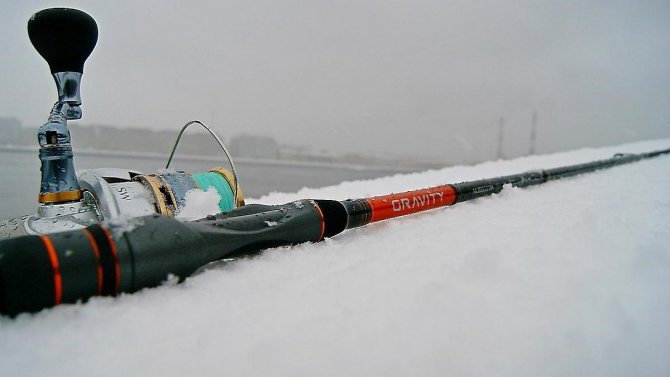
The length of the spinning rod for winter fishing is selected individually, based on the conditions and skill of the fisherman. For large rivers, you can opt for a longer option - 3 m or more with a fast action. The ability to send bait far from the shore is invaluable for the outcome of the hunt for a river predator.
On small reservoirs and small rivers (conditionally up to 60-70 m wide), a spinning rod 2.5-2.7 m long with a rigid action is sufficient. The weight of the bait should fall within the test characteristic, preferably closer to its top. Usually it ranges from 5-7 to 20-28 g. For small rivers a couple of tens of meters wide, a rod 2.1-2.3 m long will suffice. A long spinning rod in such conditions will allow you to search for fish along the coastline.
The diameter of the rings is at least 7 mm. In cold weather it will quickly decrease due to ice. A warm reel seat is desirable - covered with cork, other wood or foam rubber. This is done with your own hands by wrapping it with fabric or synthetic material, which is secured, for example, with rubber bands.
Coil
The spinning rod can be equipped with any reel you like. The weak point of multiplier versions is the needle bearing. In cold weather, it can jam, and to avoid this situation, the rollers should be periodically lubricated, preferably with a special lubricant, which is sold in fishing stores. The second feature of the reel is its cold, predominantly metal body, the third is that the spool sprays droplets of water that freeze on clothes and hands.
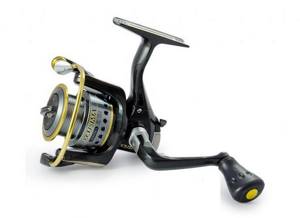
Spinning reel
Attention! The bearing is packed with maximum lubricant to expand the temperature range at which the device can be used. By removing some of the excess grease, you will slightly reduce the smoothness of operation, but the operating temperature will drop by several degrees.
The ideal solution for winter fishing is a spinning reel with 4-5 bearings; for medium and large rivers, pay attention to a power reel. It should lay the line evenly on the spool (cylindrical profile). Any gaps that appear are often eliminated using shims. In the cold, the friction brake of an inertialess reel may act up and cannot be adjusted accurately.
For your information! The desired spool volume for winter spinning is 150 m. Practice has shown that 150 m of braid on a spool will last at least 250% longer than 100 m.
fishing line
Most fishermen agree that multifilament fishing line is better for winter use than monofilament fishing line. Without treatment, it freezes more, but has zero elasticity. Japanese cords made of high molecular weight polymers have a very low coefficient of friction, which has a positive effect on:
- casting range and accuracy;
- wear resistance.
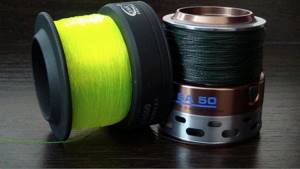
Pay attention to tensile strength, because the nominal diameter does not always correspond to the real one.
Lure or Bait
Winter spinning is not complete without jig baits. Small silicone fish have proven themselves. They are slowly moved along the bottom, submerged, and then raised, making a step, or driven through the water column with short-term hang-ups.
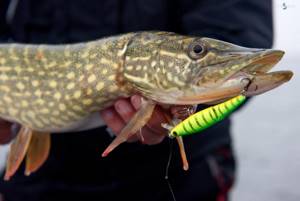
Foam rubber baits are not suitable for winter; they quickly freeze and lose their properties. The variety of wobblers, spinners and spinners is constantly growing. For winter, low-frequency baits are preferable, where the tail and other playful elements oscillate slowly. Fish do not hunt active prey in the middle of winter.
The wobbler is used at any depth and arouses increased interest among predators. It must play; a static wobbler is a useless thing. Choose small samples 4-7 cm long that sink to the bottom.
Also notable are jig heads, the basis of which is a weighted jig with a mount for a silicone, polyurethane foam bait or spinner. For winter, their size and play activity decrease, otherwise they will not interest the fish. Drop-shots with a retractable leash performed well. The first is applicable for fishing from a cliff and fishing back, the second - for a flat bank. Both allow you to make slow retrieves.
Spinners are gear for summer fishing with spinning rods, and in the cold season, pike do not particularly react to them. The point of using a spoon is in warm water, for example, near hydroelectric power stations. Among the turntables, choose front-loaded ones; they simplify step-by-step wiring.
In winter, fish prefer the acidic color of the bait - yellow with admixtures of orange and black, and natural ones - the color scheme of which is similar to the color of live fish. Predators often respond well to sparkles.
Spinning in winter: tips for beginners
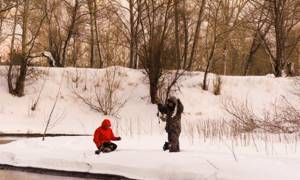
Question. Here is a person who has never fished with a spinning rod in winter, but really wants to try it. He needs your advice and guidance. What would you recommend to him?
Nikita (Nikitapipin):
- Gather the necessary gear in his opinion, dress properly and go to the pond! It is also important not to forget to experiment, because... in winter, it is experiments with baits and wiring that can bring a huge catch.
Vasily (Sibiryak007):
— The main recommendation is not to be afraid. What? Yes, climb in waist-deep snowdrifts along the river, which by some “dirty miracle” does not freeze in winter, while also having a spinning rod in your hands. You know, from the outside it looks very strange, especially in our region, where winter spinning is rather an exception to the rule. And, yes, be sure to release fish from this reservoir, do not kill young predators, because there are few of them there, and do not spoil your health with such a “delicacy” - there is never too much of it either.
Sergey (SPIN23):
- Choose a nice calm day, dress well, grab your favorite gear, and enjoy fishing!
Yes, I completely forgot to say - for fishing on the Ob, put on a life jacket. If the bank is thin - about 5 centimeters, then it is better to play it safe, since life is more valuable than any fishing. For these purposes, I purchased an expensive rescue unloading, but now I feel safe. Always wear your pants over your boots - this will prevent them from quickly taking on water if you go under the ice.
These are precautionary measures, don’t be alarmed; in several years of winter spinning practice, I failed on the edge only once.
Tackle and bait
Considering that fishing very often occurs at sub-zero temperatures, you must first take care of the cord. After all, a frozen cord, drops of frozen water on the reel and rings of your spinning rod can lead not only to the shooting of bait, but also to the breakdown of your favorite fishing tool. Therefore, even at home before fishing, it is necessary to sort out the line roller and lubricate it with a more liquid, non-freezing lubricant, and also thoroughly saturate the cord with a product that significantly reduces its icing. I consider the simplest and most accessible means today, as well as a very effective one, to be a regular car “Vedashka” (VD-40). By carefully treating the cord with this aerosol, we get the opportunity to spend a couple of fishing trips at sub-zero temperatures without the problem of icing on the cord. I also recommend treating spinning rod rings with the same product immediately before and during fishing. Personally, I only need one treatment at the beginning and a couple more times during fishing. If you regularly fish with spinning rods in winter and your budget allows, you can use more expensive silicone lubricants.
But it should be remembered that fishing at sub-zero temperatures negatively affects the strength of the line. Even a new cord can be killed in a couple of dozen fishing trips at a good disadvantage, which, considering its cost, is quite expensive. Therefore, for the third season we have been using jig lines for winter fishing, which have served a couple of summer seasons, and it is not a pity to reel them in after three or four winter fishing trips and replace them with new ones in the spring. In winter, the likelihood of being bitten by large, trophy fish especially increases, and therefore you should not use a cord with a breaking load of less than 10 kg. This entails an increase in the load, as well as a larger bait - we fish in a hole with a depth of 7-10 m and aim for the trophy. Therefore, without wasting change, we take a spinning rod with a test weight of 30-50 g, a reel of at least 3000 and weights from 40 g. We also put a steel leash no shorter than 30 cm. It can slightly reduce the likelihood of biting a pike perch, but when biting a large pike, the chances of a successful fishing will increase significantly. And yet, we no longer use collapsible “eared” sinkers during this period. The fish is passive, the bait needs freer movement with slow retrieval, which is allowed by two or three winding rings on a sinker with soldered “ears”. We also don’t go too small with baits: twisters from 8 cm, rippers from 10 cm and “worms” from 12 cm. Colorings are the latest in late autumn. Dark “machine oil” with greenery, dark “lilac” with black sparkles, marsh color also with sparkles, etc. as a contrast, “acid players”. A large landing net with a head made of thick fishing line and a long handle is required. Taking fish with a lip grip or by hand at sub-zero temperatures in winter clothes from an inflatable boat is still a pleasure, take my word for it.
Read: Winter fishing for bersh
Winter pike fishing with wobblers and jigs
Jig is an interesting way to catch predatory fish in winter. It consists of a stepped liner and allows you to reach prey from almost any depth. The bait is planted on the shallows, and then in a stepwise manner we take it to the depth, where our prey finds it. The method is quite universal. The only obstacle for him is the cluttered bottom.
A short video about stepped wiring:
As for wobblers, it is better to choose the type of bait that floats in the water column. There is no point in hunting pike on the surface of the water, and deep diving can cause snags and loss of gear.
